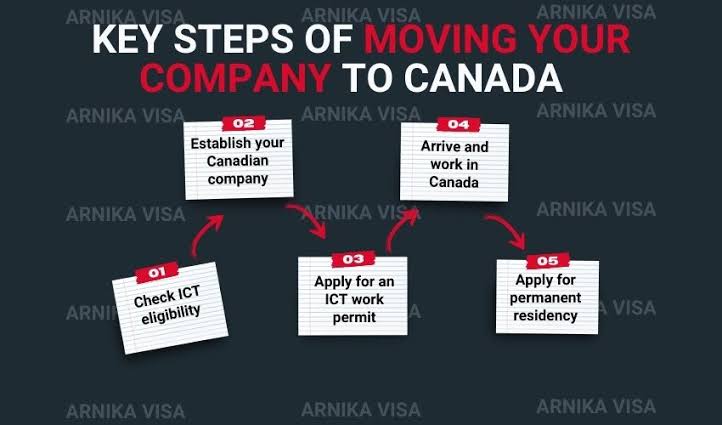The Canadian Intra-Company Transfer (ICT) work permit allows multinational companies to transfer qualified employees from their foreign offices to a Canadian branch, subsidiary, or affiliate. This program is designed to strengthen business operations in Canada by enabling the movement of key personnel without requiring a Labour Market Impact Assessment (LMIA). For businesses and employees, understanding the step-by-step process is crucial to ensure a smooth application and approval.
Understanding Eligibility Requirements
Before starting the application, both the company and the employee must meet specific eligibility conditions. The company must have a qualifying relationship between the Canadian and foreign entities, meaning they must be parent, subsidiary, branch, or affiliate companies. The Canadian office should be actively engaged in business and not just a shell operation.
For the employee, eligibility usually requires at least one year of continuous, full-time employment with the foreign company within the past three years. The position in Canada must be in an executive, senior managerial, or specialized knowledge role. Each of these categories has clear definitions under Canadian immigration regulations, and applicants should ensure their role aligns with them before applying.
Preparing the Required Documentation
A strong application depends on thorough documentation from both the company and the employee. Common requirements include:
- Proof of the relationship between the foreign and Canadian companies, such as incorporation documents or business registration records.
- Evidence of the employee’s qualifying work history, including contracts, pay records, and letters of employment.
- Detailed job descriptions outlining duties in both the foreign and Canadian positions.
- Financial documents proving the Canadian entity can support the employee and maintain operations.
- A valid passport and any previous work permit records.
Preparing these documents in advance can help avoid delays, as immigration officers often request additional details if something is unclear.
Submitting the Application
Applications for an ICT work permit can be submitted online or at a visa application center, depending on the applicant’s location. In some cases, if the applicant is visa-exempt, they may apply directly at a Canadian port of entry.
When submitting the application, it is essential to include all supporting documents and pay the required fees. The application package should clearly outline how the applicant and company meet the program’s requirements. Missing information or vague descriptions can lead to processing delays or even refusals.
Waiting for Processing and Responding to Requests
Processing times vary depending on the applicant’s country of residence and the complexity of the application. On average, ICT work permit applications can take several weeks to a few months to process.
During this time, immigration officers may issue a request for additional information (RFI). It is critical to respond promptly and provide accurate, detailed answers. Failing to respond on time could result in the application being refused.
Arriving in Canada and Starting Work
If approved, the applicant will receive a letter of introduction and, in most cases, a temporary resident visa or electronic travel authorization. Upon arrival in Canada, a border services officer will review the documents and issue the actual work permit.
The permit will specify the employer, position, and duration of authorized work. Employees are expected to begin work under the agreed role and must comply with all work permit conditions.
Renewing or Extending the Work Permit
ICT work permits are usually granted for one to three years, depending on the position and circumstances. Extensions are possible if the applicant continues to meet eligibility requirements and can demonstrate that their work in Canada still benefits the company.
For executives and senior managers, the total stay under the ICT program is capped at seven years. For specialized knowledge workers, the limit is five years. Once these limits are reached, the applicant must complete at least one year of full-time employment outside Canada before reapplying under the same category.
Common Mistakes to Avoid
Many applications face delays or refusals due to common errors, such as:
- Incomplete or poorly organized documentation.
- Job descriptions that do not clearly match the program’s definitions.
- Insufficient proof of the qualifying relationship between companies.
- Missing deadlines for providing requested information.
Being proactive in preparing a detailed, well-supported application can significantly improve the chances of approval.
Conclusion
Obtaining a Canadian Intra-Company Transfer work permit requires careful planning, accurate documentation, and strict adherence to immigration requirements. Companies must clearly demonstrate their qualifying relationship with the Canadian entity, while employees must prove their eligibility and the value they bring to the Canadian branch. By following the process step-by-step, preparing all necessary documents, and responding promptly to requests, businesses and employees can ensure a smooth transfer and contribute to successful operations in Canada.




Nice